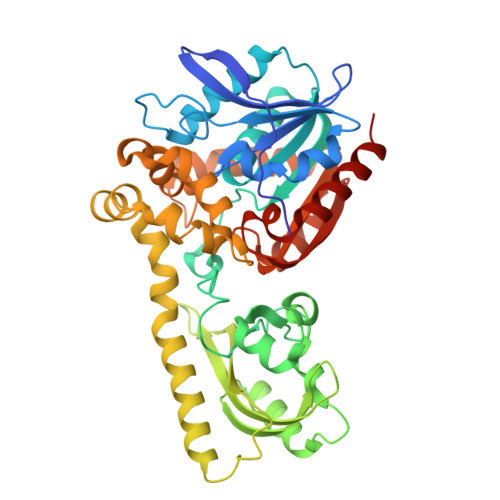A Photoswitchable HaloTag for Spatiotemporal Control of Fluorescence in Living Cells.
Walterspiel, F., Ugarte-Uribe, B., Weidenhausen, J., Vincent, M., Narayanasamy, K.K., Dimitriadi, A., Khan, A.U.M., Fritsch, M., Muller, C.W., Zimmermann, T., Deo, C.(2025) Angew Chem Int Ed Engl : e202424955-e202424955
- PubMed: 41131894
- DOI: https://doi.org/10.1002/anie.202424955
- Primary Citation of Related Structures:
9HKF - PubMed Abstract:
Photosensitive fluorophores, whose emission can be controlled using light, are essential for advanced biological imaging, enabling precise spatiotemporal tracking of molecular features and facilitating super-resolution microscopy techniques. Although irreversibly photoactivatable fluorophores are well established, reversible reporters that can be reactivated multiple times remain scarce, and only a few have been applied in living cells using generalizable protein labeling methods. To address these limitations, we introduce chemigenetic photoswitchable fluorophores, leveraging the self-labeling HaloTag protein with fluorogenic rhodamine dye ligands. By incorporating a light-responsive protein domain into HaloTag, we engineer a tunable, photoswitchable HaloTag (psHaloTag), which can reversibly modulate the fluorescence of a bound dye-ligand via a light-induced conformational change. Our best performing psHaloTag variants show excellent performance in living cells, with large, reversible, deep-red fluorescence turn-on upon 450 nm illumination across various biomolecular targets and SMLM compatibility. Together, this work establishes the chemigenetic approach as a versatile platform for the design of photoswitchable reporters, tunable through both genetic and synthetic modifications, with promising applications for dynamic imaging.
- European Molecular Biology Laboratory, Meyerhofstraße 1, 69117, Heidelberg, Germany.
Organizational Affiliation:




















